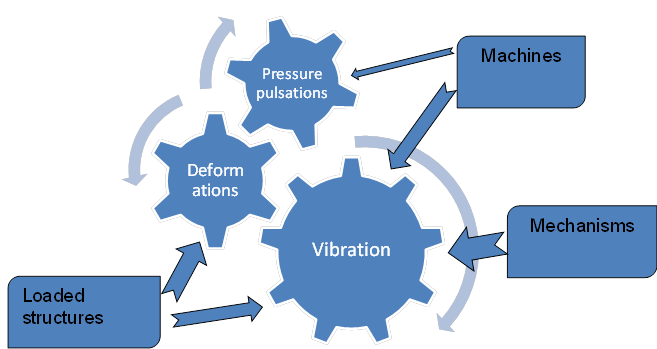In order not only to detect a fault condition of the object, but also to localize the defect and save maintenance costs, it is necessary to use advanced diagnostic methods. Mastering these methods provides real increase of safety and economic efficiency in operating active machines, structures and other objects.
The objectives of D un D Center are to create and promote advanced diagnostic methods for active machines and structures that can provide condition-based maintenance during the entire life cycle, from design to disposal.
We estimate the functional status of the object on the basis of the dynamic component of physical signals that reflect the mechanical, aerodynamic and other interactions, including vibration, deformation and, sometimes, pulsation. Our methods of vibration-based diagnostics are based on advanced measurement techniques of dynamic signals:

and on signal processing methods, which are based on physical models of dynamic loads formation in specific objects and loads transformation into vibrations. These methods allow to evaluate the quality of functioning of a specific machine unit or structure in a relative scale, not by the vibration levels that usually have a large variation even between the objects of the same type.
DID YOU KNOW ...
Film sensors are very sensitive while being rather inexpensive.